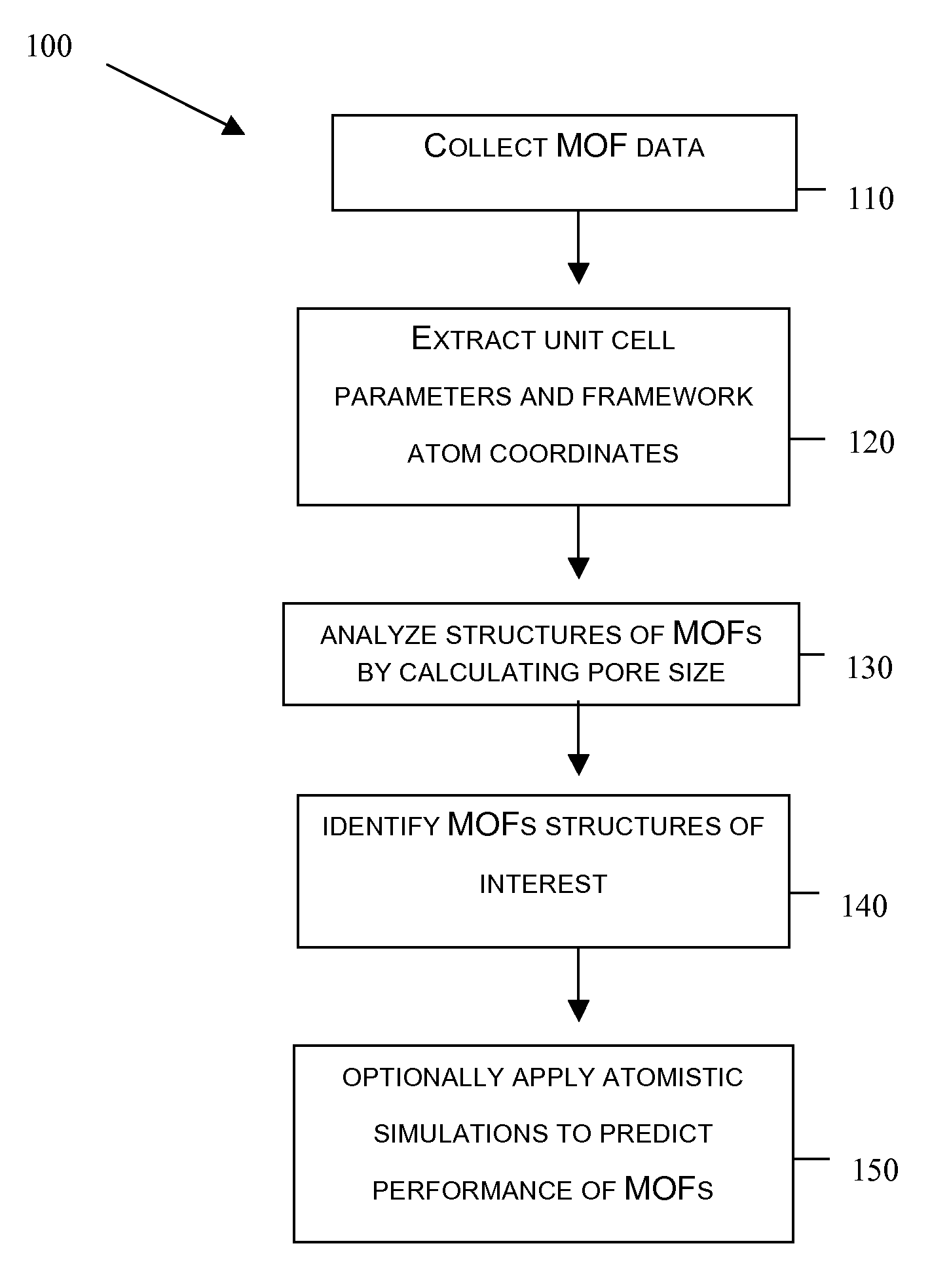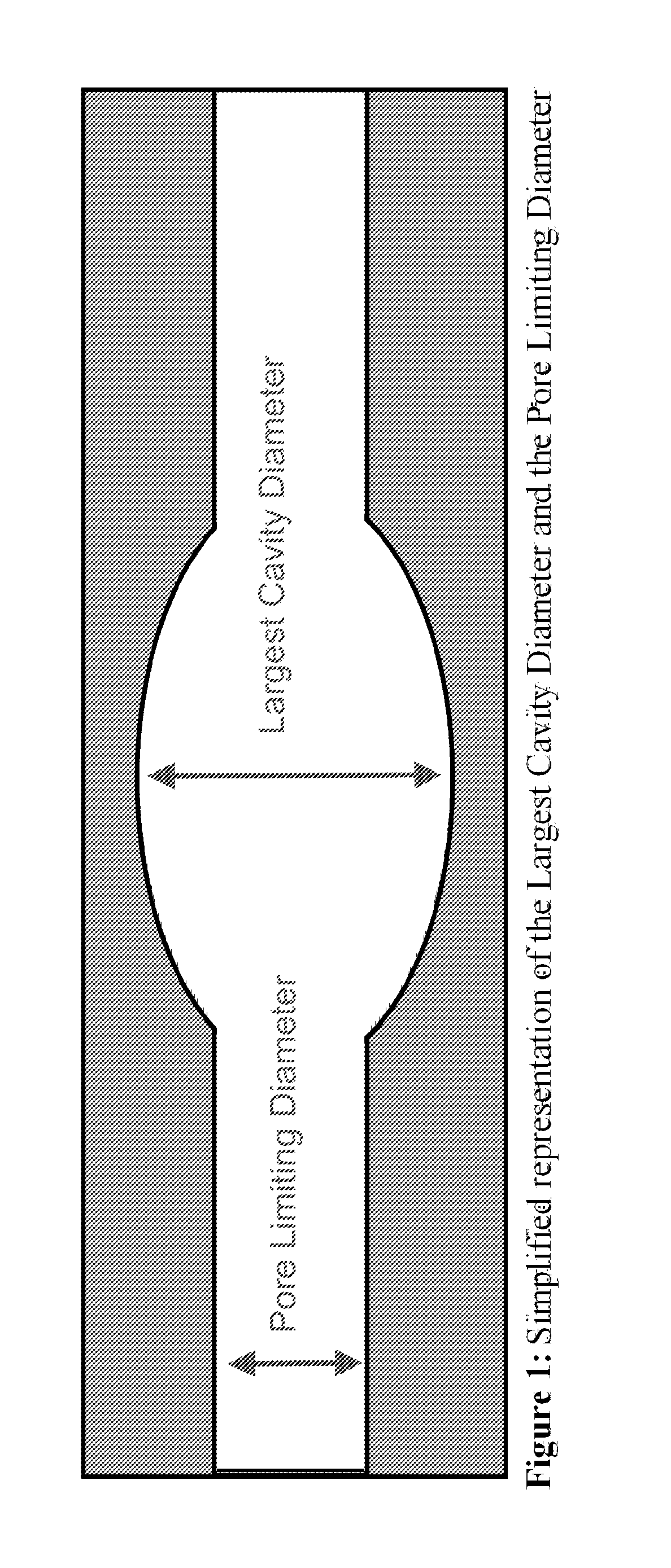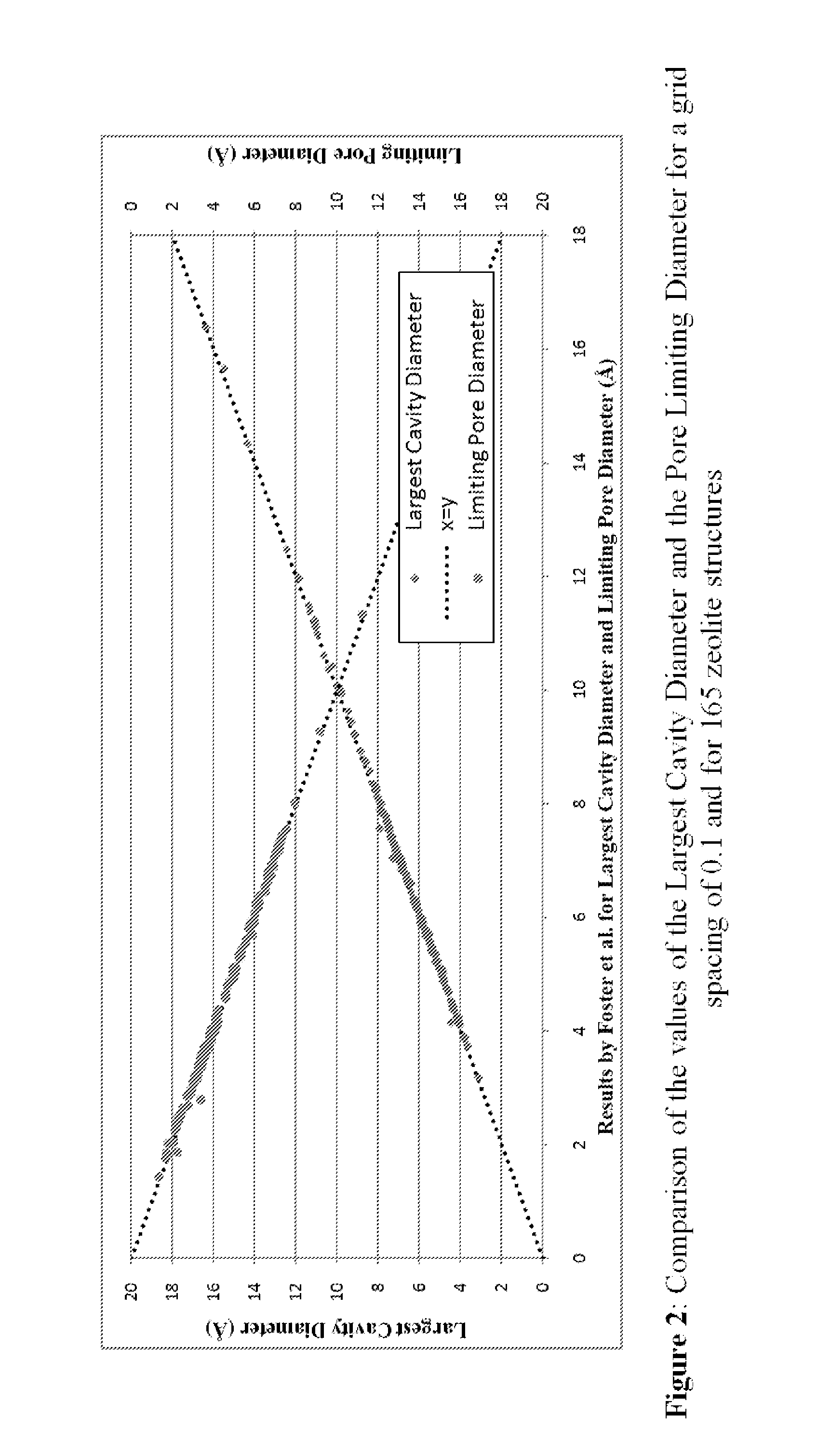Screening metal organic framework materials
a metal organic framework and screening technology, applied in the field of metal organic framework materials, can solve the problems of time-consuming and expensive process for mof membrane fabrication, and achieve the effect of time-consuming and expensiv
- Summary
- Abstract
- Description
- Claims
- Application Information
AI Technical Summary
Benefits of technology
Problems solved by technology
Method used
Image
Examples
example 1
The Method
[0039]The implementation of the inventive method was made in Fortran 90 and the resulting code was able to automatically and efficiently calculate the largest cavity diameter and limiting pore diameter for any number of given structures. Generally speaking, the code can be described as having the following steps and algorithms: The code examines the entire volume available within a single crystallographic unit cell of the material of interest, which by use of periodic boundary conditions encompasses a bulk material of infinite extent. After efficiently analyzing the sphere sizes that can be inserted in the porous material at a very large number of grid points throughout the crystallographic unit cell, algorithms are applied to characterize the largest cavity diameter and limiting pore diameter. The examination of these two limiting diameters allows for the possibility of pores that allow molecular diffusion along any direction or combination of directions, not only paralle...
example 2
Comparison with the Prior Art
[0056]To our knowledge, only one other group has developed a method to extract pore size characteristics for a large number of structures. Foster et al. (2006) applied the Delaunay triangulation method to extract the largest cavity diameter (largest included sphere) and the pore limiting diameter (largest free sphere) for 165 silica zeolite frameworks. Therefore, to verify the validity of the analysis of structures, all of the silica zeolite structures found in the zeolite database of CSD were analyzed and compared with data previously generated by Foster.
[0057]Both modeling tools calculated largest cavity diameter and the pore-limiting diameter and were found to be in excellent agreement for most structures, taking into account the numerical accuracy of the methods. Small but substantial deviations were found only for a few structures. After investigating these cases, it was found that the difference in the value of the pore-limiting diameter for two of...
example 3
Efficiency
[0058]One important issue to address when dealing with the analysis of extremely large databases is the efficiency of the procedure. Therefore, the code has been optimized and found to produce results with a speed that makes it highly appropriate for such a large-scale structural analysis.
[0059]The time for each calculation depends on various factors, but most importantly depends on the size of the unit cell since that defines the number of grid points and, therefore, the number of insertion points. Another factor is the grid spacing that is chosen, which also affects the number of points. It was found that a grid spacing of 0.01 nm (0.1 Å) is the one that gives the best combination of accuracy and calculation time. Moreover, the calculation time was affected by the number of atoms within the unit cell since at every insertion a larger number of atoms has to be checked for overlap.
[0060]The number atoms within the unit cell increases with the increase of the size of the un...
PUM
| Property | Measurement | Unit |
|---|---|---|
| bending angle | aaaaa | aaaaa |
| density | aaaaa | aaaaa |
| bending angle | aaaaa | aaaaa |
Abstract
Description
Claims
Application Information
 Login to View More
Login to View More - R&D
- Intellectual Property
- Life Sciences
- Materials
- Tech Scout
- Unparalleled Data Quality
- Higher Quality Content
- 60% Fewer Hallucinations
Browse by: Latest US Patents, China's latest patents, Technical Efficacy Thesaurus, Application Domain, Technology Topic, Popular Technical Reports.
© 2025 PatSnap. All rights reserved.Legal|Privacy policy|Modern Slavery Act Transparency Statement|Sitemap|About US| Contact US: help@patsnap.com



